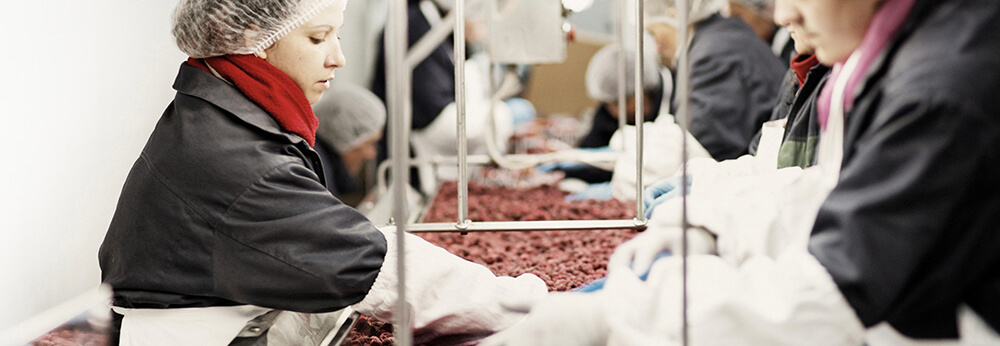Lean transformation helps food manufacturer create a global continuous improvement programme with a standardised approach in 48 plants.
Facing minimal progress in safety, quality, and productivity across its 50 production facilities, the global frozen food manufacturer underwent a transformative journey leveraging Lean principles. This undertaking led to the establishment of a comprehensive global continuous improvement programme, systematically implemented across all sites.Challenge: The company was seeking to improve safety, quality, and productivity while reducing costs and increasing profitability.
Solution: Implement a continuous improvement programme to be applied to all sites. Additional tools implementation as Total Preventative Maintenance to improve asset utilisation.
To revitalise its operations, the global frozen food manufacturer embarked on a multi-phase global continuous improvement programme, designed to standardise its approach across all production facilities. The programme's initial phase involved meticulous pilot site selection, followed by rigorous implementation and subsequent expansion to additional sites, ensuring a comprehensive reach.
The company's unwavering commitment to enhancing product quality and productivity. By adopting Total Preventative Maintenance practises aimed at optimising asset utilisation, the manufacturer minimised downtime and maximised efficiency across its production lines. Moreover, the programme emphasises optimising raw material utilisation to reduce give away, thereby minimising waste and driving cost savings.
Concurrently, efforts are directed towards optimising energy and natural resource consumption, aligning with the company's sustainability objectives while further bolstering operational efficiency. Through these strategic interventions, the manufacturer aims to elevate its performance and solidify its position as a global frozen food market leader.
Results: The manufacturer realised substantial annual savings, ranging between $15 million to $20 million globally, translating to remarkable per-plant savings averaging between $300,000 to $600,000.
- Continuous Improvement programme launched and internalised in 48 plants, 12 countries/ 5 continents, in three years
- 10% reduction in labour turnover and 4% in employee absences
- 85% sustainment of improvements, including resolution of food safety issues}
- 8% increase in productivity, 5% reduction in downtime, and 5% reduction in defects sustained by some facilities
- $300k average savings per energy Kaizen event (15 pilot events held)

